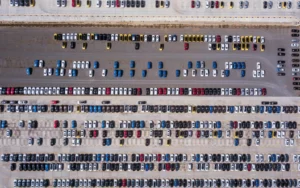n an attempt to enhance road safety and reduce accidents, the European Union is set to enforce a new regulation requiring all newly launched cars to be equipped with Intelligent Speed Assist (ISA) systems by 7 July 2024. This directive, part of the 2019/2044 regulation by the European Commission, mandates that even unregistered vehicles currently on dealer lots must be retrofitted with these speed limiters before they can be sold.
The European Commission’s legislation, which took effect on 6 July 2022, aims to curb speeding and improve overall road safety across the continent. Speed limiters, or ISAs, are systems designed to prevent vehicles from exceeding the speed limit by either warning the driver or actively limiting the vehicle’s speed, says UK Motor1.
Despite this sweeping change across the EU, Great Britain has decided not to implement the regulation. The UK Department for Transport (DfT) has confirmed that cars in Great Britain will remain unaffected by this mandate. However, the regulation will apply to vehicles in Northern Ireland, aligning with EU standards due to the specific regulatory circumstances post-Brexit.
DfT stated that while this particular safety measure isn’t being adopted in Great Britain at the moment, they are continually researching advancements in transport technology. The aim is to ensure that journeys are safe and reliable, and contribute to lower emissions, indicating that the UK may consider similar technologies in the future.
The introduction of ISAs has sparked some debate, particularly regarding the potential annoyance of warning signals for drivers. To address this, manufacturers are given four options to alert drivers when they exceed speed limits – a gentle pushback on the driver’s foot; automatic reduction of propulsion power, which can be overridden by pushing the pedal; flashing visual signals followed by audio cues if the speeding continues; visual cues followed by pedal vibrations, escalating to combined signals that time out if ignored.
This new regulation is part of a broader EU strategy to incorporate advanced safety technologies into all new vehicles. Other mandatory features include automated emergency braking (AEB), lane-keeping assistance, and advanced driver distraction warning systems. These technologies are intended to mitigate human error, which is a significant factor in road accidents, and to ensure a safer driving environment for all road users.






















